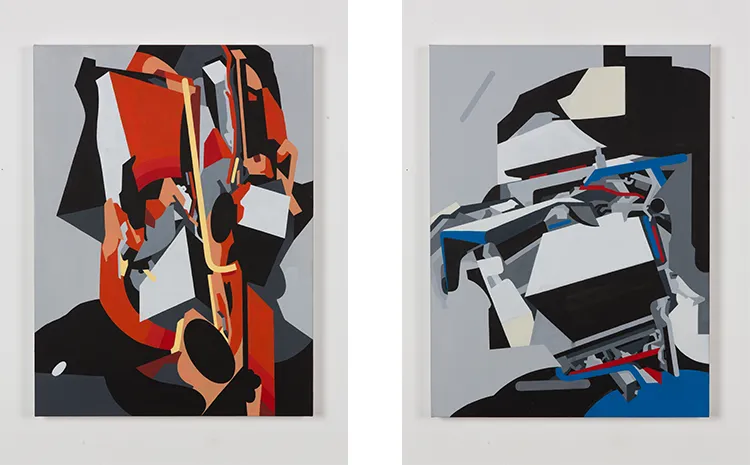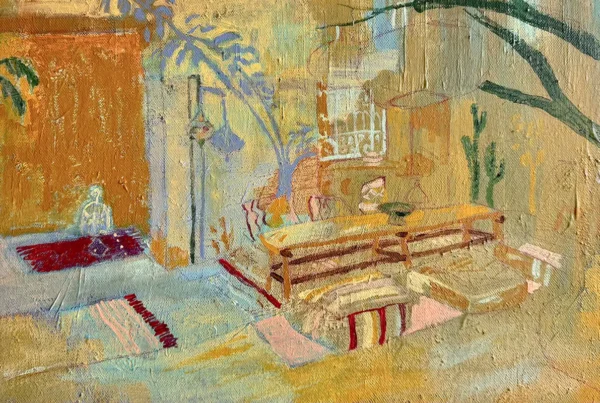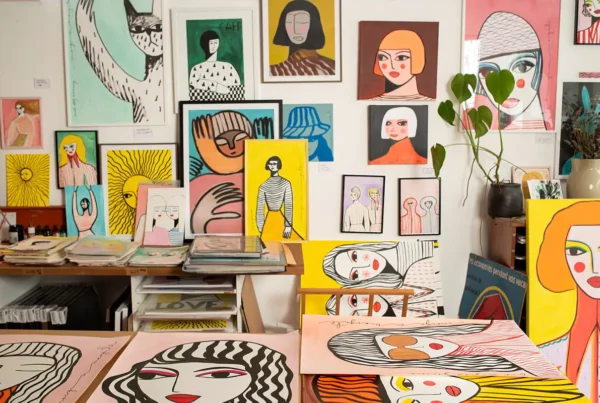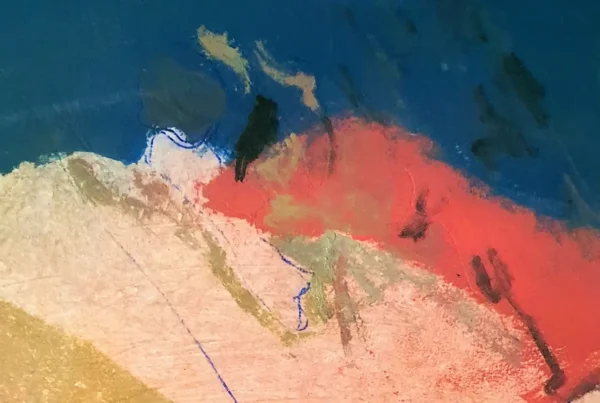“The balance between control and chaos, structure and freedom, is always at the core of my work.”
Tobias Kroeger: From Graffiti Roots to Neo-Expressionist Evolution
Tobias Kroeger’s artistic journey is a testament to the transformative power of creative evolution. Born in Bremen, Germany, in the 90s, Kroeger began his exploration into art through graffiti, a medium that gave him the freedom to explore self-expression in the bustling streets of his hometown. These early years in the street art scene were formative, shaping both his artistic instincts and his love for spontaneity. While his journey began in the public spaces of Bremen, it has since shifted into galleries and studios, where his signature style—an energetic blend of Neo-Expressionism and graffiti—comes to life. Kroeger’s work is defined by a delicate balance between control and chaos, structure and freedom, where fast-paced creativity meets a refined, thoughtful approach.
The transition from street artist to full-time professional came in 2010, after years of working as a graphic designer. Kroeger found himself yearning for a deeper, more personal artistic practice, one that would allow him to channel the raw energy of his early graffiti days while exploring more structured and varied techniques. By committing fully to his art, he embraced a hybrid style that celebrates the rebelliousness of his graffiti origins but is tempered by a sophisticated engagement with form and color. His current work captures this duality, offering the viewer a dynamic interplay between instinctive, fast-drawn lines and meticulously balanced compositions.
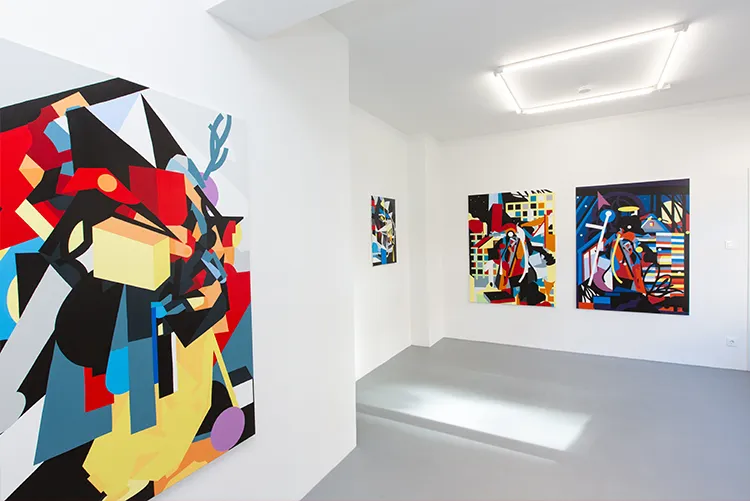
Tobias Kroeger: The Dance Between Control and Chaos
Kroeger’s artistic philosophy revolves around the constant push and pull between freedom and control. His chosen mediums—canvas and drawing—allow him to engage in this creative dance, offering a sense of immediacy that mirrors the fast-paced nature of his graffiti roots. What draws him to these forms is their flexibility; the ability to switch styles quickly keeps his work fluid and alive. The rapid transitions in his process reflect his ever-changing artistic moods, giving his pieces an inherent energy that speaks to both spontaneity and careful deliberation. Whether sketching chaotic scenes during moments of family life or refining those sketches into larger, more structured works, Kroeger thrives on this balance.
Thematically, Kroeger’s work often returns to this tension between structure and freedom. His exploration of Neo-Expressionism provides a framework for understanding how he navigates these competing forces. In every stroke, there is a deliberate tension, as if the artist is constantly wrestling with the desire to control the narrative while simultaneously letting it unfold organically. This tension is especially evident in works that juxtapose rough, graffiti-inspired marks with smooth, deliberate layers of paint, resulting in pieces that are as much about the process as they are about the final visual outcome.
Kroeger’s admiration for artists like Christopher Wool and Georg Baselitz further influences his approach. These figures, known for their ability to reinvent themselves while remaining faithful to their artistic core, inspire him to continuously experiment and push boundaries. Like his influences, Kroeger seeks to evolve without losing sight of the spontaneity that first drew him to art.
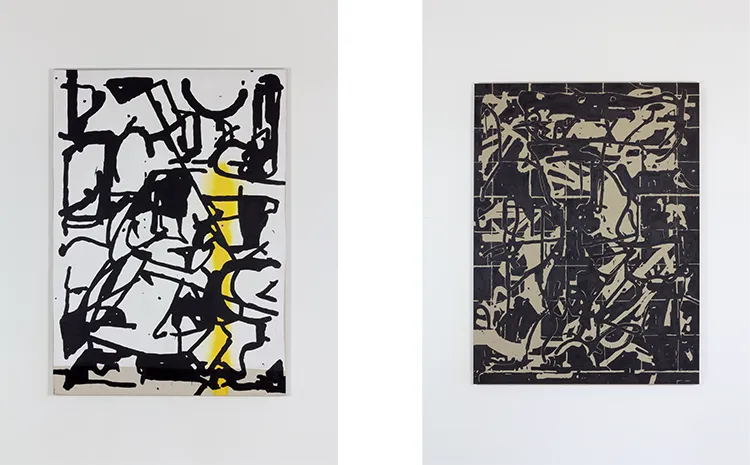
The Studio as a Playground of Spontaneity
For Tobias Kroeger, the workspace is more than just a place to create; it’s a reflection of his entire process. An open, flexible environment is essential, allowing him to move freely and engage with his large-format canvases. The physicality of his practice—working on expansive surfaces, making quick decisions—demands a space that can accommodate both his rapid shifts in style and the large-scale nature of his work. He views his studio as a dynamic playground where the interaction between the artist and the environment directly influences the outcome of each piece.
Interestingly, distractions aren’t viewed as hindrances but as integral to Kroeger’s work. Life’s interruptions, whether in the form of his children or the unpredictability of daily routines, have woven themselves into his process. Instead of resisting these distractions, Kroeger embraces them, letting them fuel the spontaneity that drives much of his art. Sketches that emerge during chaotic moments often become the blueprint for larger works, evolving from quick ideas into fully developed pieces that maintain an element of unpredictability.
This sense of adaptability is also evident in his broader ambitions. Kroeger has recently shifted his focus to large-scale facade projects, where his art interacts with architecture and urban environments. These projects, which revisit his roots in graffiti, allow him to bring art into public spaces in a more refined and thoughtful way. The challenge of blending bold, creative designs with the rigid structures of urban landscapes is one that excites him, offering yet another way to explore the balance between control and chaos.
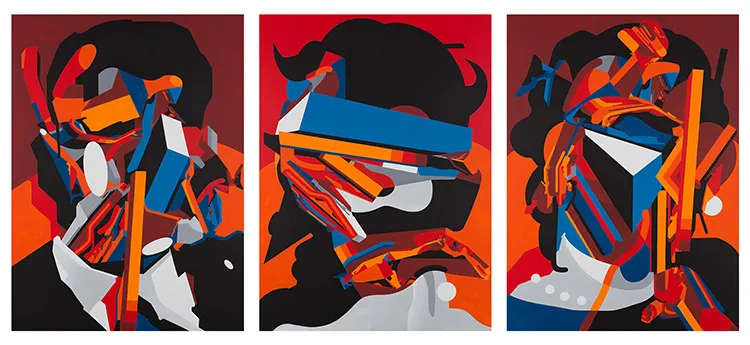
Tobias Kroeger: Revisiting the Power of “Minitoraumachy”
One of the works that continues to resonate deeply with Kroeger is his triptych titled Minitoraumachy. This piece, composed of quick drawings but executed using the Hardedge technique, stands as a prime example of the duality that defines his art. The work’s combination of spontaneous sketches with a structured, precise painting style captures the tension between two competing forces—a hallmark of Kroeger’s artistic voice. Inspired by the portraiture and triptych format seen in Francis Bacon’s work, Minitoraumachy represents the merging of spontaneity and formality, creating a visual dialogue between instinct and deliberation.
For Kroeger, Minitoraumachy holds a special significance not only because of how it turned out but because of the potential it continues to hold for future exploration. The piece represents a high point in his blending of graffiti’s raw energy with the calculated refinement of more traditional techniques. Its balance of spontaneity and structure is something that Kroeger is eager to revisit, possibly taking the work in a more minimalist direction. This desire to re-engage with past works reflects his broader artistic philosophy, which views every piece not as a final statement but as part of an ongoing conversation.
Looking forward, Kroeger remains committed to pushing his art in new directions, whether through revisiting works like Minitoraumachy or exploring large-scale public installations. His versatility as an artist, combined with his willingness to embrace both chaos and control, ensures that his work will continue to evolve while remaining deeply rooted in the values that have defined his career from the very beginning.
